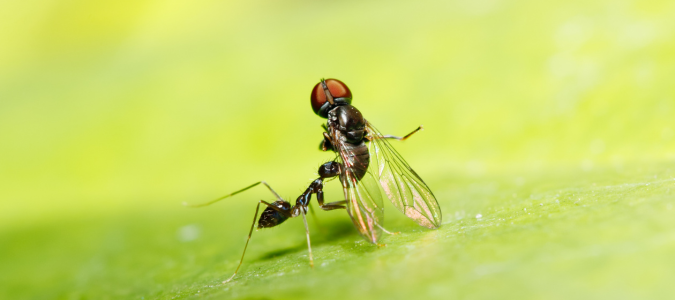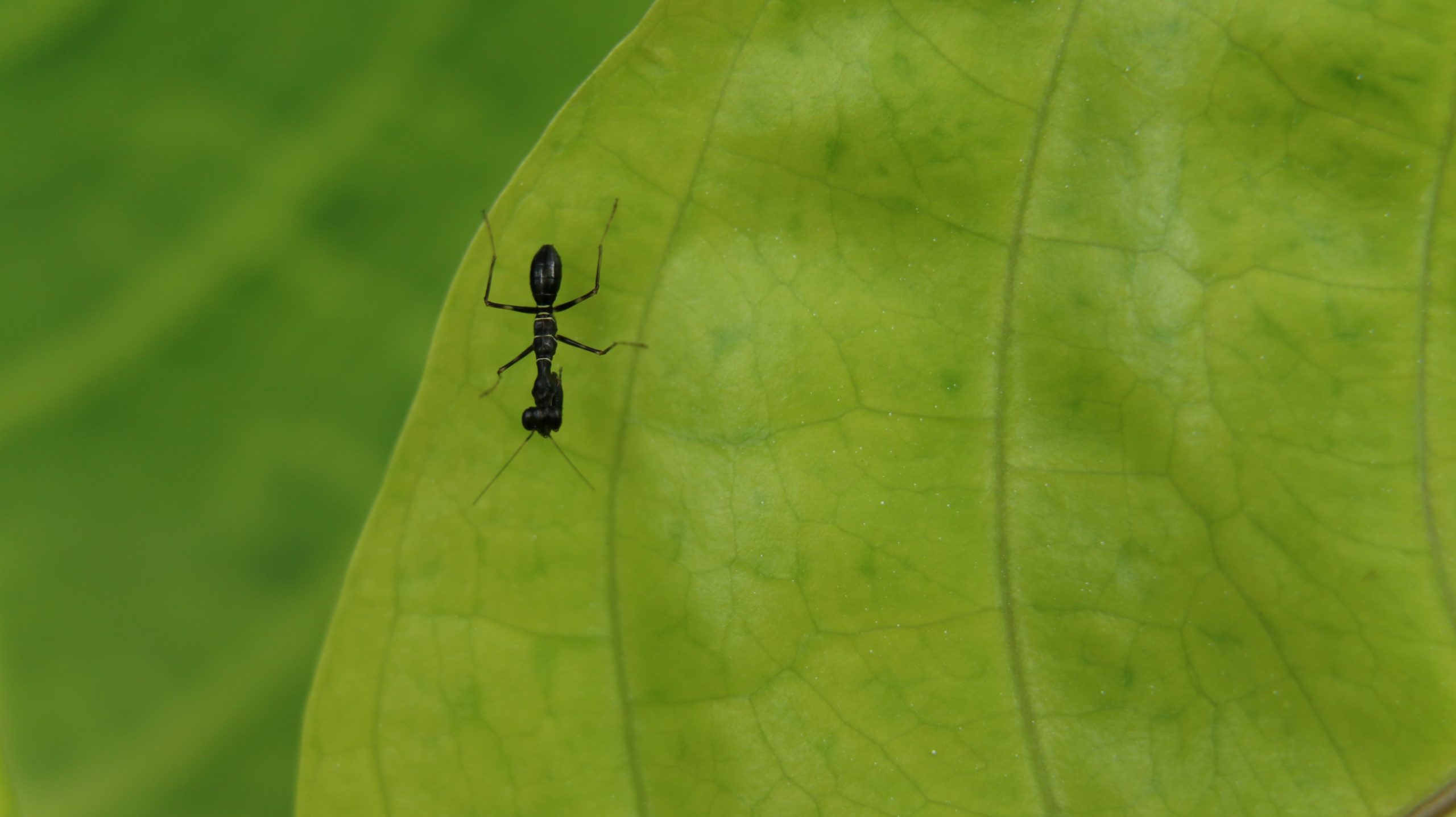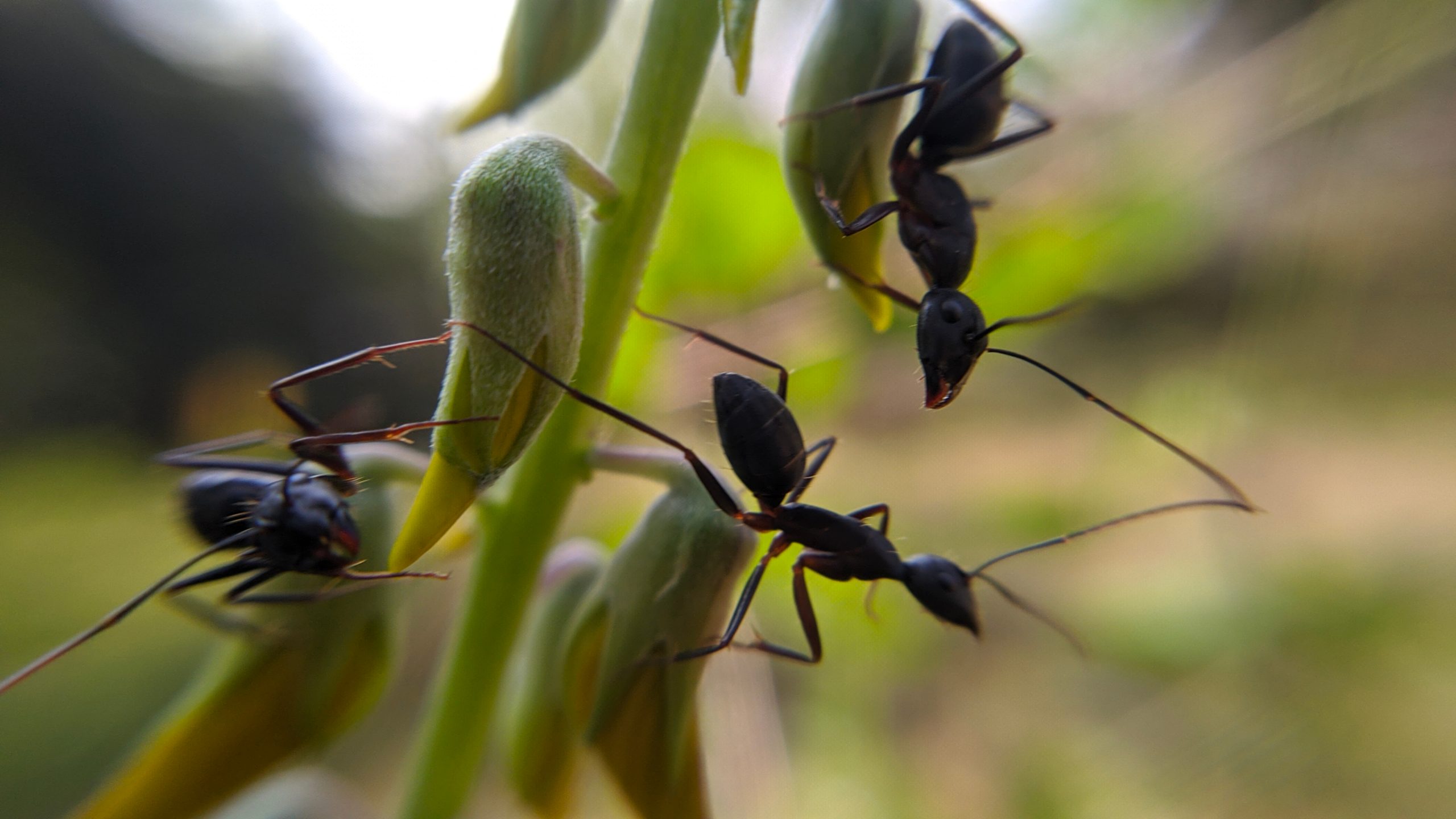Do you know how to tell crazy ants apart from other ant species? Crazy ants, which are found in Texas, Mississippi, Louisiana, Florida, and Georgia, get their name because of the way they move. Instead of following uniform lines, they run in erratic zig-zag patterns.
Crazy ants are also known for multiplying rapidly since their colonies can have multiple queen ants. They can quickly become a nuisance for homeowners because of their large swarms and reproduction rates.
A third distinction is that crazy ants do not build their own nests. Instead, they camp out in trees, debris and crevices inside homes. Since they will leave their homes at a moment’s notice, controlling them with bait is challenging. For more on crazy ant behavior, appearance, and habitat, keep reading.
There are several things homeowners can do to prevent a crazy ant infestation. However, once they have taken up residence, professional pest control is required. It’s extremely difficult for homeowners to get rid of crazy ants on their own.
Crazy Ants: Identification and Control Guide
Crazy ants are dark brown to black ants that measure around one-eighth of an inch long. These pests were first discovered in Texas in 2002.
Crazy ants can survive in both moist and dry environments. Unlike most ant species, they do not build mounds or nests. Instead, they reside in trash, soil, plants, underneath rocks, and inside homes.
They will even live inside electrical equipment, which can cause a variety of issues. Crazy ants often move indoors to escape cold weather.
One significant distinction with crazy ant colonies is that they have multiple queens. Since the queens are the only females that reproduce, crazy ants can multiply at an alarming rate. Their small colonies join together to form “supercolonies,” and before you know it, there can be thousands or even hundreds of thousands of crazy ants on your property.
Crazy ants feed on other insects, dead or alive. Since a crazy ant population can expand extremely fast, they threaten other native and valuable insect species. They will also eat plants, nectar, seeds, fruits, grease, and household food waste.
How Crazy Ants Got Their Name
They are called crazy ants because of their odd behavior when they search for food. They crawl around in a fast and erratic zig-zag manner, which helps set them apart from other types of ants. Their bodies are also hairy, and they have abnormally long legs. Their long legs allow them to move much faster than other ants. Lastly, their antennas have 12 segments.
The good news about these pests is that they don’t pose any serious health risks to humans; however, their invasiveness can cause significant problems. A crazy ant colony can quickly invade your home or property.
Crazy ants can cause also cause damage to electrical equipment. They like to nest in electrical boxes, inside computers and other electronic devices. Once inside, these pests can chew through electrical insulation and expose wires. While they can’t chew through the actual wires, exposing wires is enough to cause electrical shorts.
When crazy ants are electrocuted, it causes a release of a pheromone that attracts other crazy ants from the colony. The problem can grow out of hand very quickly.
Another interesting crazy ant behavior is that they move homes often. Since they don’t build their own nests, they aren’t committed to one spot. They are more like campers and will leave their camping spot whenever it isn’t ideal for them. Because of this, it’s hard to treat crazy ants with traditional ant baits.
The only way to completely control an invasive crazy ant infestation is to contact a professional pest control service. Since they multiply so rapidly, it’s wise to call in help as soon as you notice them in your home or on your property.
How To Get Rid of Crazy Ants
Crazy ants are extremely difficult to get rid of on your own. It’s best to know how to prevent ants to avoid them altogether.
Annual pest control inspections are one effective way to prevent crazy ants. Keeping your home tidy, especially where there is food, is also important. Wipe up spills and crumbs, and do not leave dirty dishes in the sink.
Seal up all cracks and crevices in your home to prevent crazy ants from getting inside. You may need to apply caulk around your windows and doors. You should also have your foundation inspected for potential entry points for pests.
Crazy ants can also become a nuisance outside, so keeping your property tidy is important. Clean up debris from dead trees and fallen branches and leaves. Keeping your landscaping trimmed back can also give crazy ants fewer places to hide.
Do not let trash pile up outside, and keep a tight lid on your trash bins. If you have a compost pile, keep it covered and consider switching to a compost bin that lifts off the ground.
If you already have crazy ants, the best thing you can do is contact a pest control service. They will use expert-grade treatments and methods to control the invasive population. Additionally, many pest control experts offer ongoing pest management services, so you’re less likely to deal with a future infestation.
The History and Facts About Crazy Ants in Texas
The crazy ant originated in South America and was first seen in Texas in 2002. A pest control professional named Tom Rasberry discovered them in Houston, which is why they are sometimes called Rasberry crazy ants.
Crazy ants have since spread to other counties along the gulf coast and hill country. Along with Houston, they are most common in Pasadena, Deer Park, Friendswood, Pearland, Seabrook, La Porte, Texas City, La Marque, and Dickinson.
Smaller crazy ant populations have also been found in Bexar, Brazoria, Brazos, Cameron, Chambers, Comal, Fayette, Fort Bend, Galveston, Hardin, Hays, Hidalgo, Jefferson, Jim Hogg, Liberty, Matagorda, Montgomery, Nueces, Polk, Orange, San Augustine, Travis, Victoria, Walker, Wharton, and Williamson counties.
Outside of Texas, crazy ants have been spotted in Mississippi, Florida, Georgia, and Louisiana. People usually transport them, and it is believed that they got to Texas via a commercial ship from South America.
These pests have even become a major problem for NASA. After infiltrating electrical wiring at their facilities, NASA had to call in Tom Raspberry and other pest control professionals to deal with the problem.
If you live in Texas or another state affected by crazy ants, regular pest control inspections can help you keep these pests away. If you already have a crazy ant problem, contact a pest control professional.
Get Rid of Annoying Crazy Ants
From the moment crazy ants were discovered in the United States, they have been a nuisance for American homeowners. They reproduce quickly, move in unpredictable ways, and are hard to control. They can also cause severe damage to a home by exposing electrical wires and causing shortages.
Homeowners can prevent crazy ants by keeping their homes and yards clean and free from food sources. Wiping down counters and cleaning up messes go a long way in keeping these pests out of the home. Keeping the yard clear of debris and trash makes a big difference.
Crazy ants are almost impossible to get rid of without professional help. If you see crazy ants on your property or in your home, call in an expert. A professional pest control service can give you your home back.
ABC Can Treat the Crazy Ants on Your Property
If you’re dealing with crazy ants, contact ABC Home & Commercial Services. Our professionals will create a custom ant treatment plan for your property. Our professionals can treat any type of ants that homeowners are dealing with, including pharaoh ants and carpenter ants.


